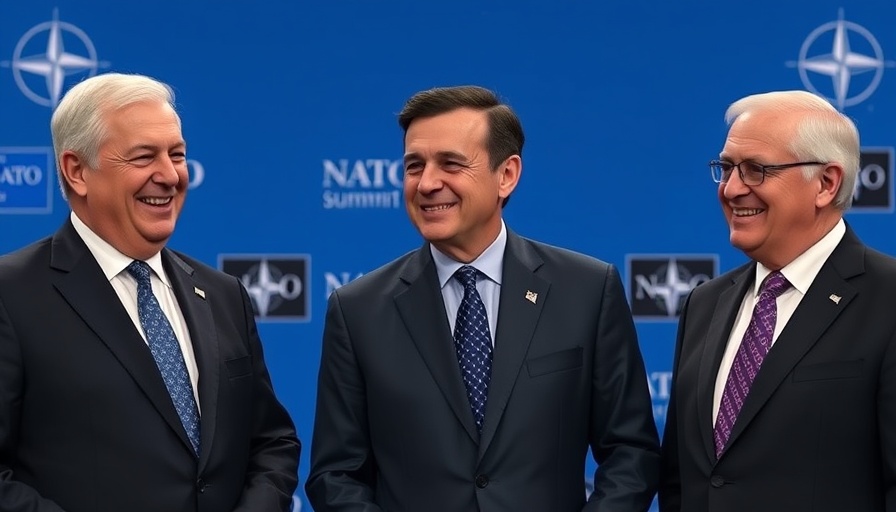
NATO’s New Five Percent Defense Spending Target Explained
Canada has recently joined NATO allies in a significant shift, pledging to spend five percent of its Gross Domestic Product (GDP) on defense by the year 2035. This decision was made during a NATO summit in The Hague, reflecting growing concerns about global security and defense preparedness. Prime Minister Mark Carney expressed optimism about Canada's ability to meet these targets, emphasizing the need for robust investment in defense infrastructure.
Understanding the Spending Categories
The five percent target is categorized into two main areas: 'core defense requirements,' which includes direct military spending, and 'broader defense-related infrastructure and industry,' covering spending that strengthens the overall defense framework without directly impacting military capability. Such a division allows for flexibility in how the funds are allocated while ensuring that Canada meets both immediate and strategic defense needs.
The Historical Context: Past Spending and Challenges
Historically, Canada has struggled to meet NATO's previous defense spending goals, which called for two percent of GDP. This lag in spending has raised questions regarding Canada’s role and commitment within the alliance, especially as geopolitical tensions escalate globally. The five percent target represents not only a commitment to future readiness but also an acknowledgment of the changing nature of warfare and security threats.
Future Predictions: What Lies Ahead for Canada’s Defense Spending?
With the new spending target set for a decade from now, it’s crucial to analyze the impact on both defense policy and public opinion over this period. Analysts anticipate a gradual increase in budget allocation toward defense, which may necessitate difficult conversations about trade-offs in other areas of public spending, such as healthcare and education. If Canada successfully redirects its budget to fulfill its NATO obligations, this could enhance its standing within the alliance and lead to improved collaborative defense initiatives with allies.
Potential Impacts on Canadian Society
The pledge to increase defense spending could stir a mixture of reactions among Canadians. Some may view the commitment as necessary in light of international threats, such as the rising aggression from global powers, while others might express concern about potential cuts to social services. Engaging in open dialogue regarding these investments will be key to managing public sentiment and understanding the broader implications of this defense strategy.
Global Perspectives: How Canada Fits in the Bigger Picture
The five percent pledge aligns Canada with other NATO nations ramping up their defense budgets, following the invasion of Ukraine and the resurgence of state-sponsored threats. This shared commitment across nations may create opportunities for improved defense cooperation. Observing how Canada positions itself alongside larger military powers like the United States, will be critical in ensuring it is not only compliant with NATO expectations but also capable of contributing effectively to collective security efforts.
Engaging Citizens in the Defense Dialogue
As Canada embarks on this path, it is essential for the government to foster a sense of ownership among citizens concerning defense spending. Transparency in how funds are allocated, alongside public forums to discuss priorities, can help enhance community support for the necessary changes in budget allocations. The government must consider innovative ways to educate the public about the benefits of an increased defense budget in terms of national security and international standing.
Conclusion: A Call for Unity in Defense Strategy
Canada's pledge to increase its defense spending to five percent of GDP marks a significant shift in national defense policy and its commitment to NATO. With the next decade providing a time frame for planning and implementation, it will be imperative for the government to consider the implications of this spending on society as a whole while ensuring transparent communication with the public. It is not just a fiscal commitment; it is a rededication to the principles that underpin the alliance and a call for unity in the face of global challenges.
 Add Row
Add Row  Add
Add 




 Add Row
Add Row  Add
Add 

Write A Comment